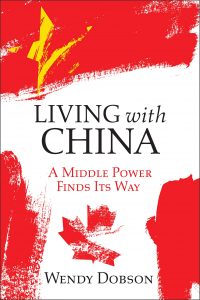Author Wendy Dobson calls China’s system “authoritarian state capitalism.” Analysts similarly called pre-war Italy a “corporate state.” Like the Beijing Politburo of 2021, Mussolini in 1934 mesmerized outsiders with showboat statistics. Italian GDP appeared to defy Depression-era gravity, growing year over year from 1929 to 1939 while the Canadian economy shrank five percent overall.
“Everything looks well ‘on the surface’,” wrote economist Henry Schultz of the University of Chicago on a 1934 Italian tour. “No debating, no complaints.” The UK Saturday Review in 1934 put Mussolini on its cover and enthused: “He dragged Italy out of the mire of socialism and in a few years has made it the most successful and prosperous country in Europe.”
Interestingly, both pre-war Italy and contemporary China adopted the identical economic tools: over-valued currency, state management of the economy, price controls, abolition of independent trade unions, abolition of dissent, abolition of a free press, restrictions on mobility rights, property rights and rule of law, voodoo statistics and disastrous state spending. In fascist Italy one in five workers was a government employee.
“Canadians will have to learn to deal with regimes that differ from theirs whether they like it or not,” writes Author Dobson, a former federal associate deputy minister of finance. “A narrative for deeper engagement with China should therefore accept that China is different, but cooperation is possible and differences can be acknowledged and managed.”
Living With China is an invitation to argument. “They are not like us,” writes Dobson, in an unnerving echo of Mussolini’s press clippings. T.S. Eliot called fascism “an Italian regime for Italians, a product of the Italian mind.” So Dobson writes: “China will be itself. Canadians should adjust their expectations by learning about it and living with it as it evolves.”
Dobson concludes China defies gravity and is on a trajectory leading ever upwards. She cites the Politburo’s Five-Year Plans, the Made In China 2025 policy to “realize the goal of the country becoming a world leader in advanced manufacturing.”
“All levels of government in China are involved,” writes Dobson. “Local governments in particular have pushed projects forward, speeding progress towards national goals, especially in robotics. Impressive indeed, but performance has to be weighed against evidence that funds are being misallocated and efforts duplicated in the rush. The heavy state role raises questions about the implications of such politicization for the innovation ecosystem.”
Living With China is neither an outright apology for Chinese fascism nor a critical analysis of its fatal flaws. It is a buy-and-save contemporary artifact of conventional wisdom: Chinese are different, they must be doing something right, they might play rough but we can’t shun them. “One goal for Canadian leaders’ increased attention should be to deepen public knowledge about China and to address the reservations and concerns about China,” writes Dobson.
As Tung Chee-hwa, the former Communist Party-appointed chief executive of Hong Kong, used to tell visiting reporters: “You don’t understand this. You are not Chinese.”
By Holly Doan
Living with China: A Middle Power Finds Its Way, by Wendy Dobson; University of Toronto Press; 192 pages; ISBN 9781-48750-4823; $32.95






